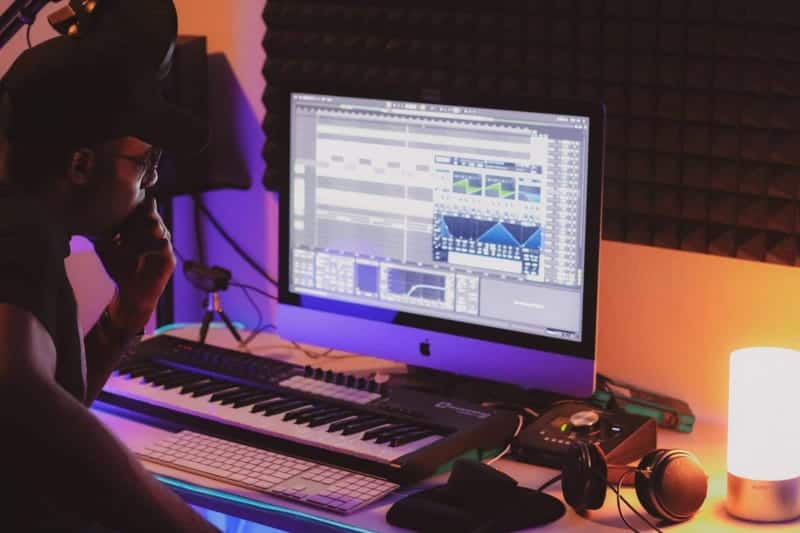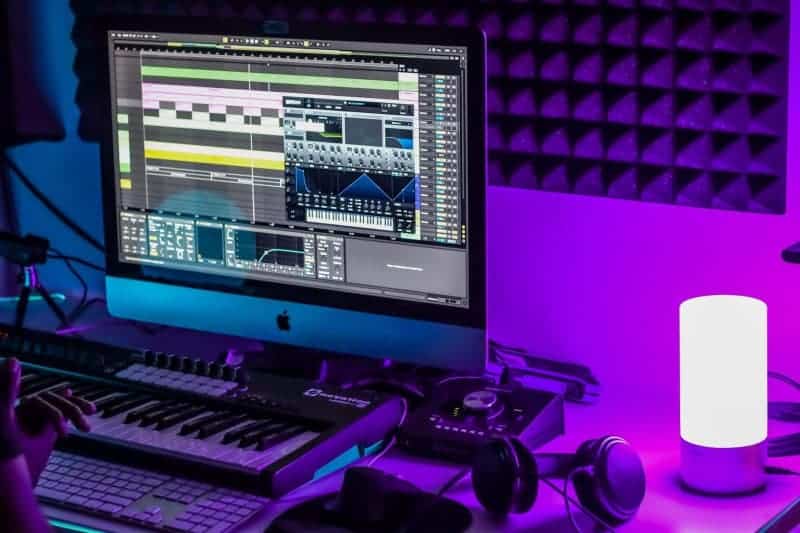Advances in home studio recording mean that your average bedroom producer can release pristine soundtracks mixed entirely in the box. When it comes to synthwave music production, today’s plugins add the sheen, finesse and warmth needed to invoke a retro vibe. But what about background noise, VHS tape hiss and similar “unwanted” artifacts that, according to modern day synthwave producers, are crucial for conjuring the retro sound. In this article we’ll discuss how to use ambient background noise, VHS tape hiss and other oddities to send our listener back to the 80’s for a truly authentic synthwave experience.
Question: How to use ambient VHS tape noise to make your track sound totally retro?
Answer: When added in small amounts, ambient noise elicits feelings of nostalgia and harken to a time when many recording were captured, viewed and shared on less that ideal media formats, such as the VHS, betamax cartridges and cassette tapes. While the goal of a music producer is to create a clean mix, an increasing amount of synthwave producers are using a combination of plugins, background noise and synthesized sound effects to conjure nostalgia, reverie and warmth.
A Little Dirt Goes A Long Way
Pay close attention to some of your favorite synthwave releases. Most of them have a bit of dirt in them. By dirt, we’re referring to background noise. While background noise is something many producers would rather avoid, using it in sparring amounts conjures a sense of nostalgia, reverie and reminiscence.
When added in small amounts, ambient noise elicits feelings of nostalgia and harken to a time when many recording were captured, viewed and shared on less that ideal media formats, such as the VHS, betamax cartridges and cassette tapes. The ability to create an authentic synthwave vibe rests on the use of carefully selected samples. Watch the entire synthwave tutorial and discover how this simple yet powerful music production tip can seemingly add life to a synthwave track.
The 80’s Called – They Want Their Noisy Synths Back
Recordings that took place in the 1980’s had a special sound to them. Some of those beloved recordings will forever go down in history as unforgettable gems in music history. However, some of the new wave music that found its way to the dance floor of popular night clubs had a lot of “noise” in them. These “noisy” recordings were sometimes the result of a synthesizer’s circuitry. Keep in mind, these recording date back to when mixing in a box was a thing.
Also, tape hiss was very real and became synonymous with analog recording. For these reasons, synthwave producers are inspired to use ambient noise to add a touch of vintage dust to their recordings.
Where to Find or Create Background Noise in a Synthwave Track?
If you’ve ever want to add ambient background noise to your tracks, consider using anyone of the following.
- VHS tape hiss (sample packs)
- Ambient background noise of a busy cafe
- Noise generated background noise (easily created in Massive, SERUM etc)
- Synthesis from a variety of source material and run through a slew of Ableton native plugins
- Field recordings (head outside and capture ambient sounds)
- Foley sample packs
When to Use Background Noise in a Synthwave Track?

The trick with using background noise is not to over use it. In short, you want to ensure that it’s volume remains low in the mix. While you track is playing, toggle the background noise track on and off. If you notice the lack thereof – then you’re probably hitting the volume sweet spot.
Sometimes, you may want to ensure that the background music track is audible during key points of a song. For instance, ambient noise is typically louder during intros and outros.
Do note that there are moments in a synthwave arrangement where you’re better off muting or drastically lowering the volume of the ambient noise. For instance, busy sections of a composition tend to avoid using ambient noise tracks as it may interfere with melodic elements. In such cases, the use of low, high pass filters and volume automation can leave room for the more prominent instruments of your mix.
Which Plugins Create Background Noise?
Izotope Vinyl
If you’re looking to be creative and make your own background ambient noise tracks for your synthwave track, consider using Izotope Vinyl plugin. It’s free, robust and flexible giving you the ability to add your own pops, clicks and crackles normally heard on older vinyls. It’s no wonder lo-fi Hip Hop producers have been using this plugin with tremendous success for years. Alternatively, you can find an abundance of ambient noise samples from reputable sample libraries on the web. Before doing so, just be sure you have the legal right to incorporate them into your track.
Super VHS
Baby Audio’s Super VHS is a neat little vst that enables you to add color and noise to a signal. With six unique “one knob” effects inspired by the VHS-era, this plugin adds tons of sonic dust to any instrument.
- Learn more on Synth bass mixing
- Learn how to make synthwave snare drums
- Learn how to use foreshadowing on a synthwave track
- Learn how to create a whisper track
- Learn how to create better transitions in your arrangement
- Learn how to program synthesizers by ear the easy way
- Enroll in the synthwave course
How to Mix Background Noise in a Synthwave Track?

If you’re wondering how to mix the background ambient noise into your synthwave track, here are some ideas to get you started on the right foot.
Apply side chain compression to background ambient nose
Consider side chaining your background ambient noise track. Use a kick, LFO or other instrument as a trigger. This ensures your noise tracks pumps with the rhythm, dynamics and groove of your song.
Use two or more ambient noise tracks
Now would be a great time to showcase your music production chops by pairing a noise track and setting the on the left and right within your track’s stereo field. Just make sure they are not identical and ensure that their frequency contents are contrasting. When done correctly, these tracks which reside at the extreme of your left and right channel provide ear-candy for a listener.
Use the pitch or frequency shifter on a track
Apply a small amount of pitch shifting to one ambient background track. Moreover, you can use Ableton’s newly upgraded Redux plugin on the another noise track for variety.
Conclusion
It’s true that most producers would agree that using VHS tape hiss to a modern synthwave track (oxymoron) has been done to death. The new meta, however is to use the background noise so that it’s quiet, unassuming and set low in the mix. Have fun.
Recent Posts
What’s the Most Frustrating Part of Making Music And How to Overcome It
Music creation can be one of the most rewarding forms of self-expression. But let’s be honest—it can also be maddening. That moment when inspiration strikes… only to be blocked by technical...
Finding time to produce music while managing a job can be challenging, but several strategies can help you balance both effectively. Prioritize Music Production Make music a priority in your...

